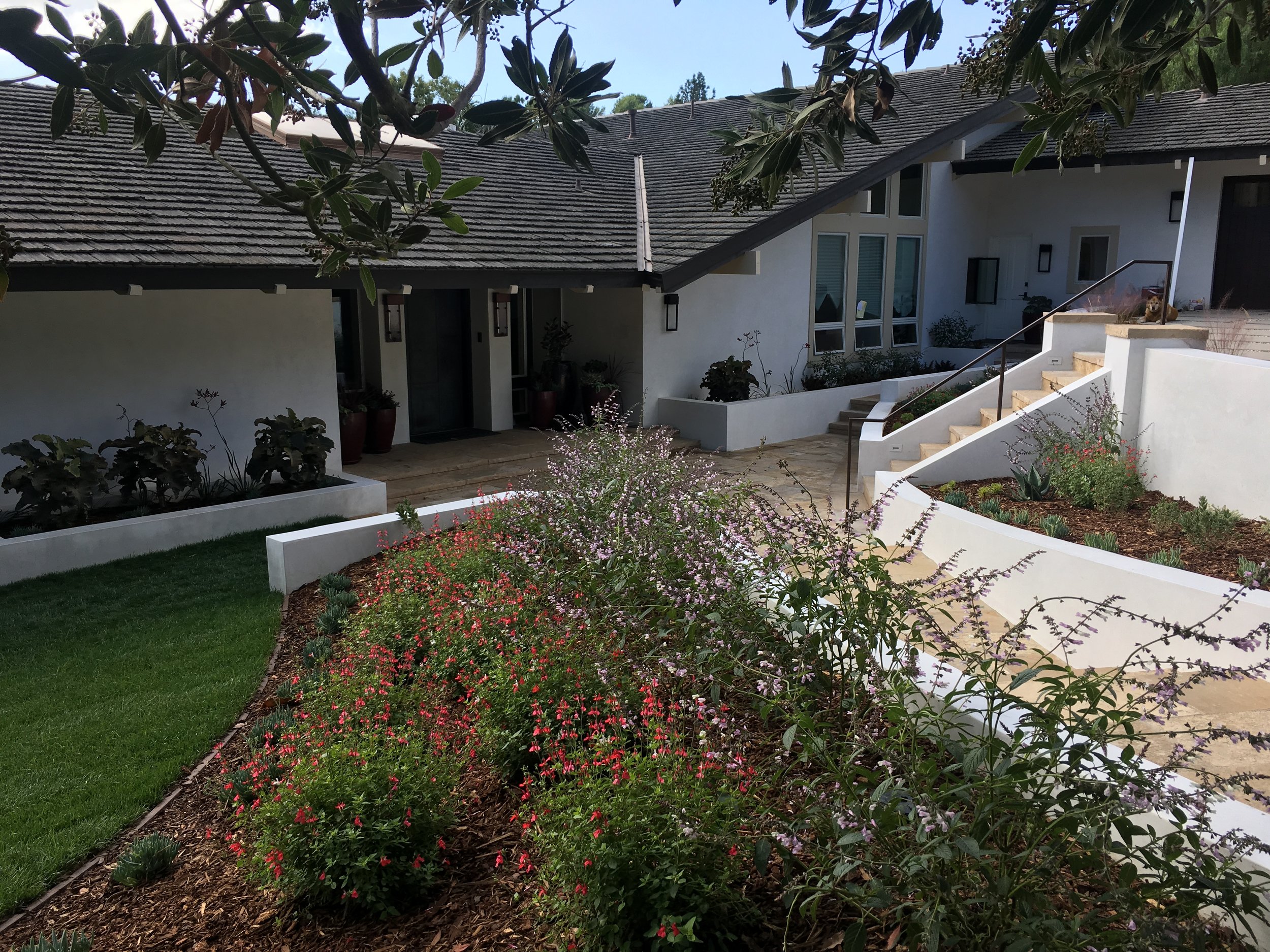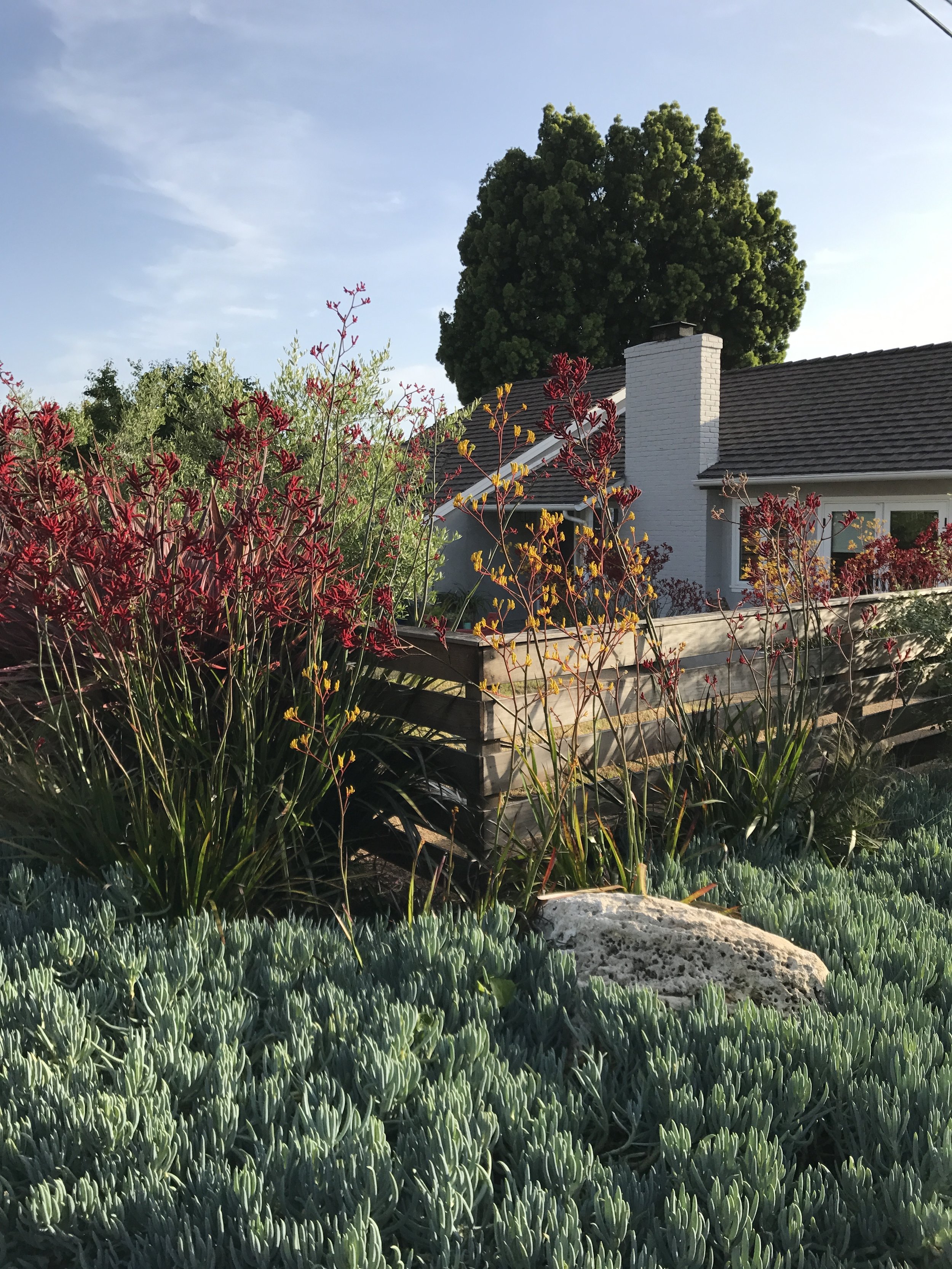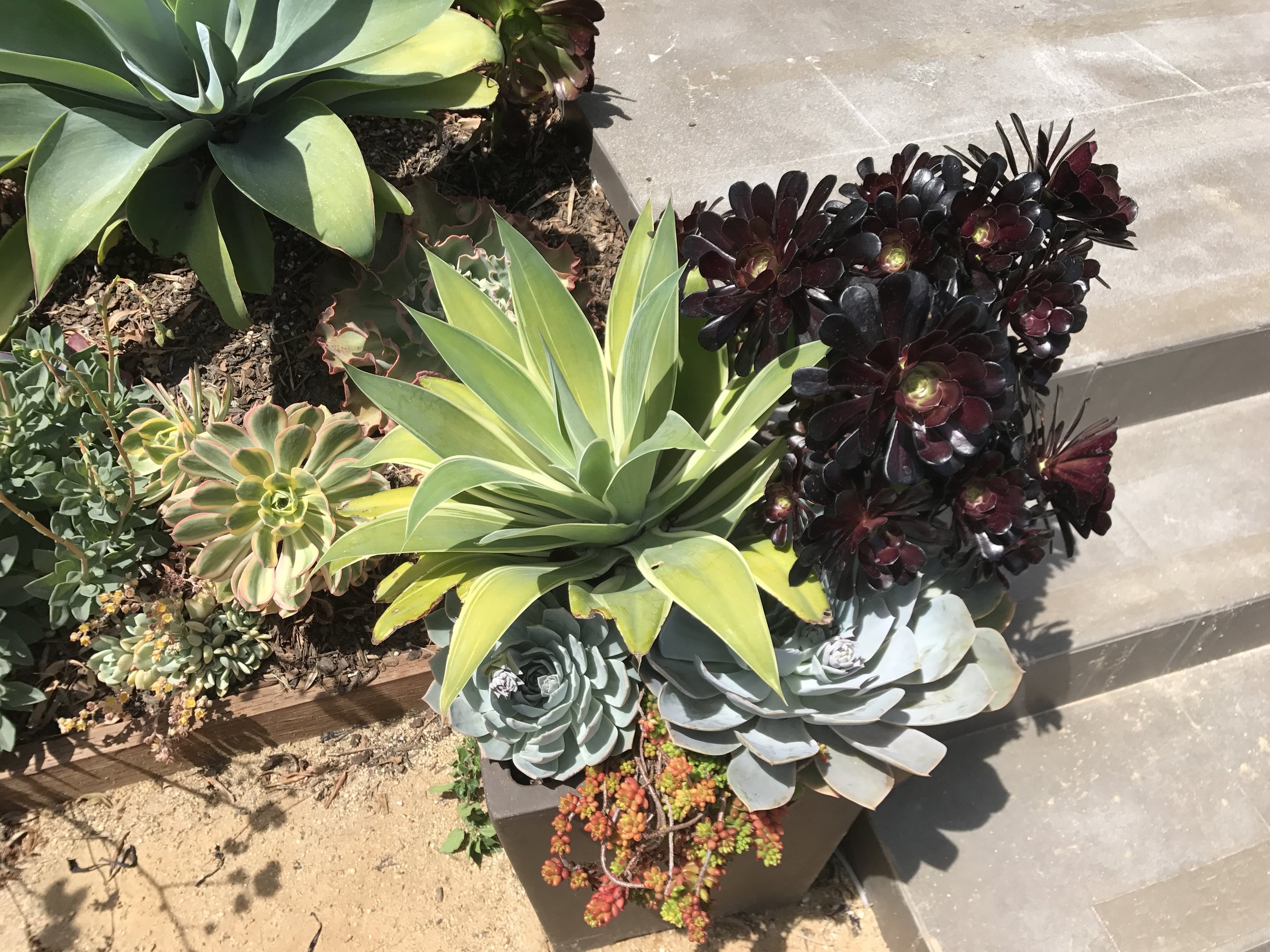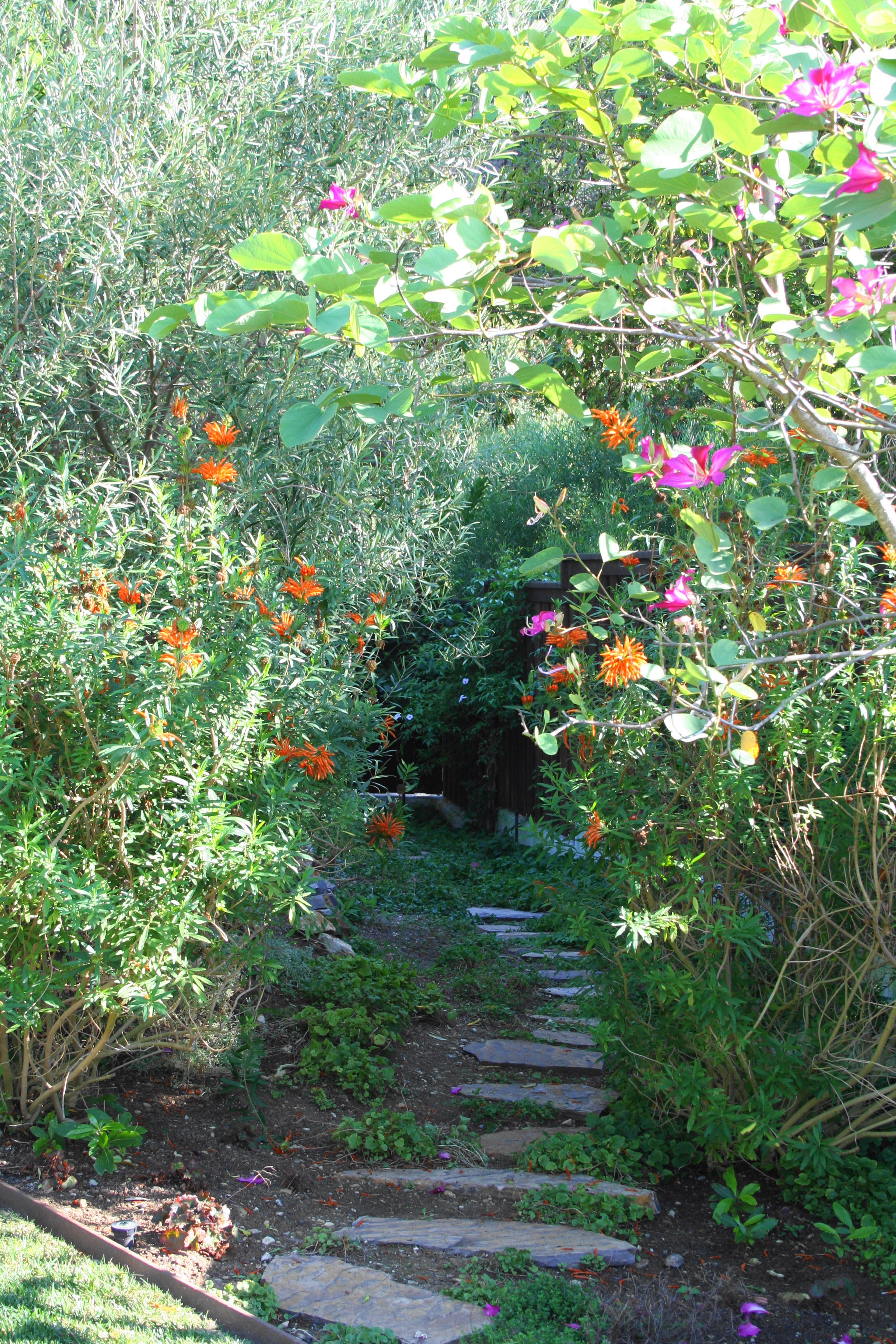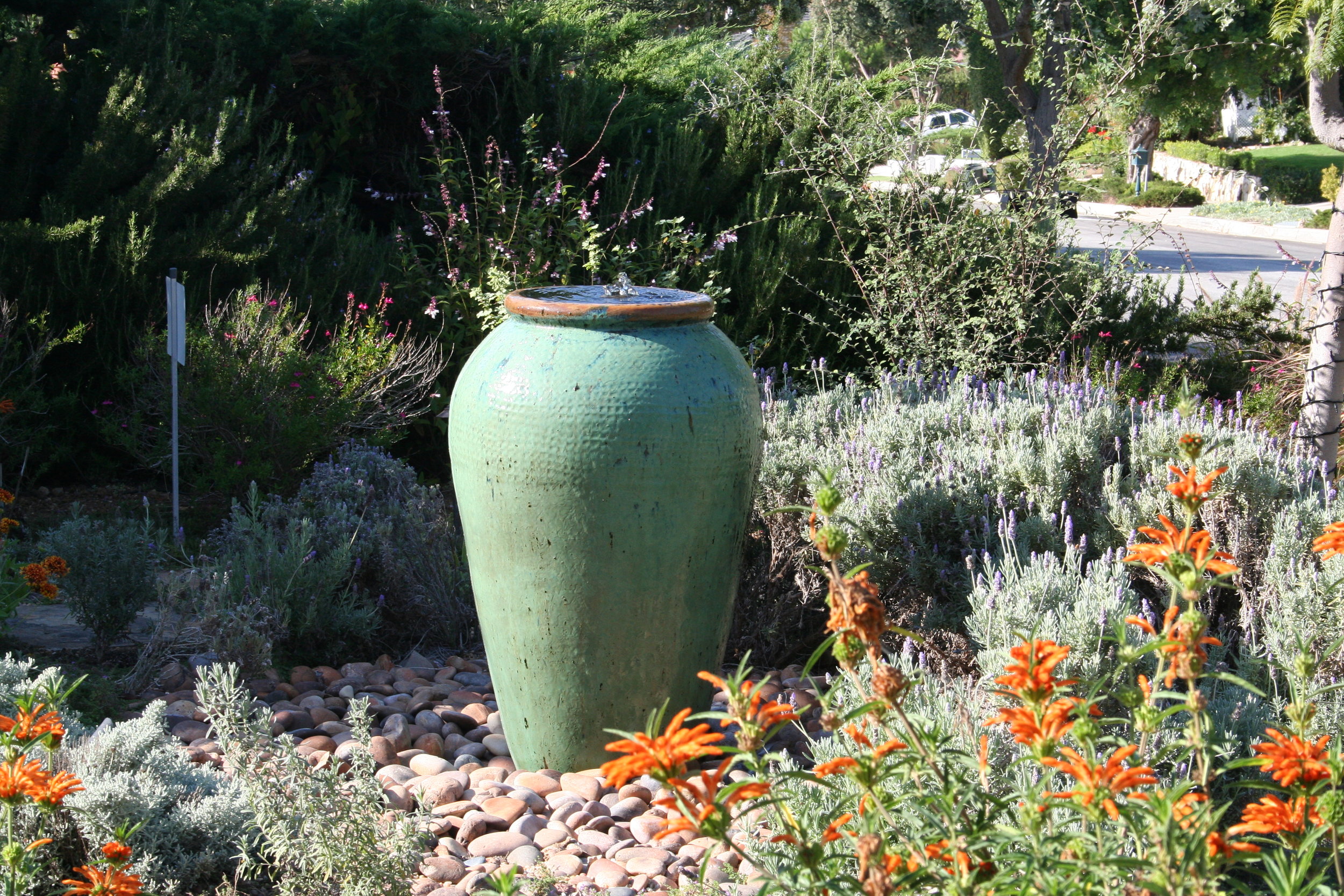The end of summer is here and with it some of the hottest days of the year are coming. As we have seen historically, the hot weather and rain free days may last well into December. This past winter, however, we were blessed with rain which brought so many beautiful wildflowers. The conservancies both here on the Palos Verdes Peninsula and on Catalina Island each noted how many special specimens of wildflowers were in bloom this year that had lain dormant for many years before.
While water filled the Catalina Island reservoirs and our local supply this past year, it is certain the California water shortage regulations are here to stay. So, let’s go ahead and embrace all the Mediterranean climate has to offer and plant what grows best with minimum water.
Mediterranean planting does not mean Desert Cactus and gravel. It can include stunning species such as grand Stone Pines, Bay Laurels, Olive Trees and Lavender. It also includes an array of natives with gorgeous blooms such as ceanothus and salvia and these natives are happiest when only watered in their winter growing season. There are so many plants to choose from the palette can be endless. Not all low water plantings have to be cactus!!
So many natives have been bred with new cultivars that have larger longer blooms. There are beautiful salvias such as the native “clevlandii” and peppermint geraniums which make great ground covers. Ribes varieties make lovely dark green shrubs, native grasses have really taken off with many varieties and functions to choose from. Of course, they require judicious placement because they can really take off. Lavender is not native but works wonderfully for blending, as they have beautiful grey color and offer added elegance of texture.
It is a great time to try something new – avoid artificial turf – there are so many other beautiful low water options. If you try something different and it does not thrive in that spot, just take it out and try again! There are so many varieties to choose from. Talk to your neighbors and local contractors and see what has been tried and thrived in your micro-climate. Plants are particular and need specific soil properties, drainage and light. They also need A LITTLE water.
They also need A LITTLE water. This is another great misunderstanding for many homeowners. The reality is that many plants get TOO MUCH water. We all water too much and the plants and turf simply don’t need it. Some of them even suffer because of it. Especially during the upcoming winter months, many homeowners don’t adjust the water to account for shorter days and cooler temperatures. The plants simply don’t need as much water as the long hot days in July. Try cutting back slowly in the fall starting in September and October. By December, January and February 1-2 days of water may be just right at ½ the time of the water applied in the heat of summer. If we have a hot spell, you can add another day of water, but cut back on the minutes per day.
Finally, one of the biggest issues with watering effectively is soil compaction. Much of the soil around has been compacted by overuse, construction, and traffic. Compacted soils don’t allow water to penetrate down to the plant roots. Constant raking of the leaf debris and clearing away plant litter causes additional compaction, hardens the top layer of the soil and deprives the land of some of the best available natural nutrients. Consider leaving some of that natural debris to break down creating new soil. Additionally, break up hardened soil with a hand trowel, the old-fashioned way, and add compost. This will really make a difference with water filtration of the soil resulting in healthier soil, happier plants, and water savings which means dollar savings. Saving water is an easy thing to do and everyone benefits, so have fun and get planting!
